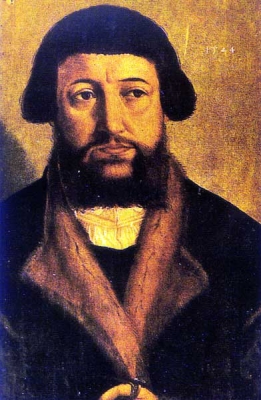1984 - 1997

Andreas Osiander (1496-98/1552) always lived in the shadow of the great Reformers Luther, Melanchthon, Zwingli, and Calvin. It was only with the ten-volume complete edition of his writings, sermons, opinions, and correspondence that his multifaceted significance for Reformation history came to light. Active as a preacher for the Reformation in the imperial city of Nuremberg since 1522, he played a decisive role in its fate until 1548. As he refused to comply with the reversal of Reformation achievements imposed by the emperor and implemented by the city's council, he left Nuremberg and spent his final years as a professor at the young University of Königsberg, where, among the students of Luther and Melanchthon, disputes arose over his Christology and doctrine of justification, so that his reputation among the Reformers remained damaged thereafter.
The edition documents Osiander's extensive contribution to the history of the Reformation in Nuremberg and his original yet controversial positions in the theological debates of the 16th century. The church order for Brandenburg-Nuremberg, in which he played a key role, became a model for many later church orders. His catechetical sermons achieved high circulation numbers and were translated into English and even Icelandic. As a scholar of medieval Jewish traditions, he defended the Jews against accusations of ritual murder and other suspicions.
History of the Research Center
Work on the edition began in 1969 at the Reformation Historical Research Institute under the leadership of Professor Dr. Gerhard Müller. After collecting and reviewing all the material to be edited, the first volume was published in 1975 in collaboration with Dr. Gottfried Seebaß and edited by a rotating team of early-career researchers. After Professor Müller was elected bishop of the Evangelical-Lutheran Church of Braunschweig, the leadership of the research institute was transferred to Professor Dr. Seebaß in Heidelberg. Initially funded by the German Research Foundation (DFG), the project was taken over by the Heidelberg Academy of Sciences in 1984. It was completed in 1997 with the publication of the tenth volume.
Complete Edition
Writings and Letters
- 1522 - March 1525 (PDF) (37 MB)
- April 1525 - December 1527 (PDF) (36 MB)
- 1528 - April 1530 (PDF) (42 MB)
- May 1530 - December 1532 (PDF) (27 MB)
- 1533 - 1534 (PDF) (32 MB)
- 1535 - 1538 (PDF) (28 MB)
- 1539 - March 1543 (PDF) (110 MB)
- April 1543 - December 1548 (PDF) (40 MB)
- 1549 - August 1551 (PDF) (40 MB)
- September 1551 - October 1552 and other (PDF) (58 MB)
Chairman of the Commission
Landesbischof Prof. Dr. Gerhard Müller DD
Head of the Research Institute
Prof. Dr. Gottfried Seebaß (internal link)

